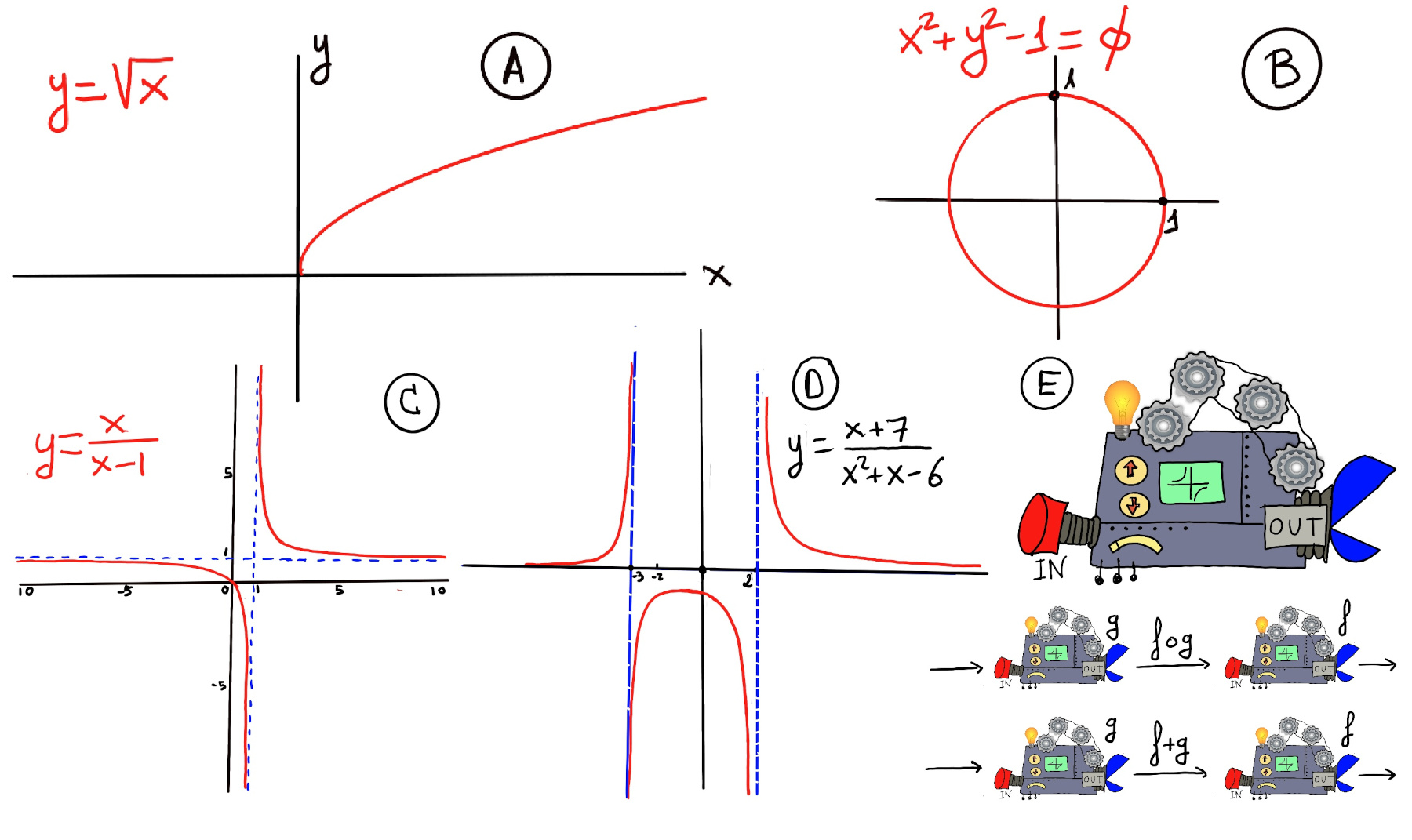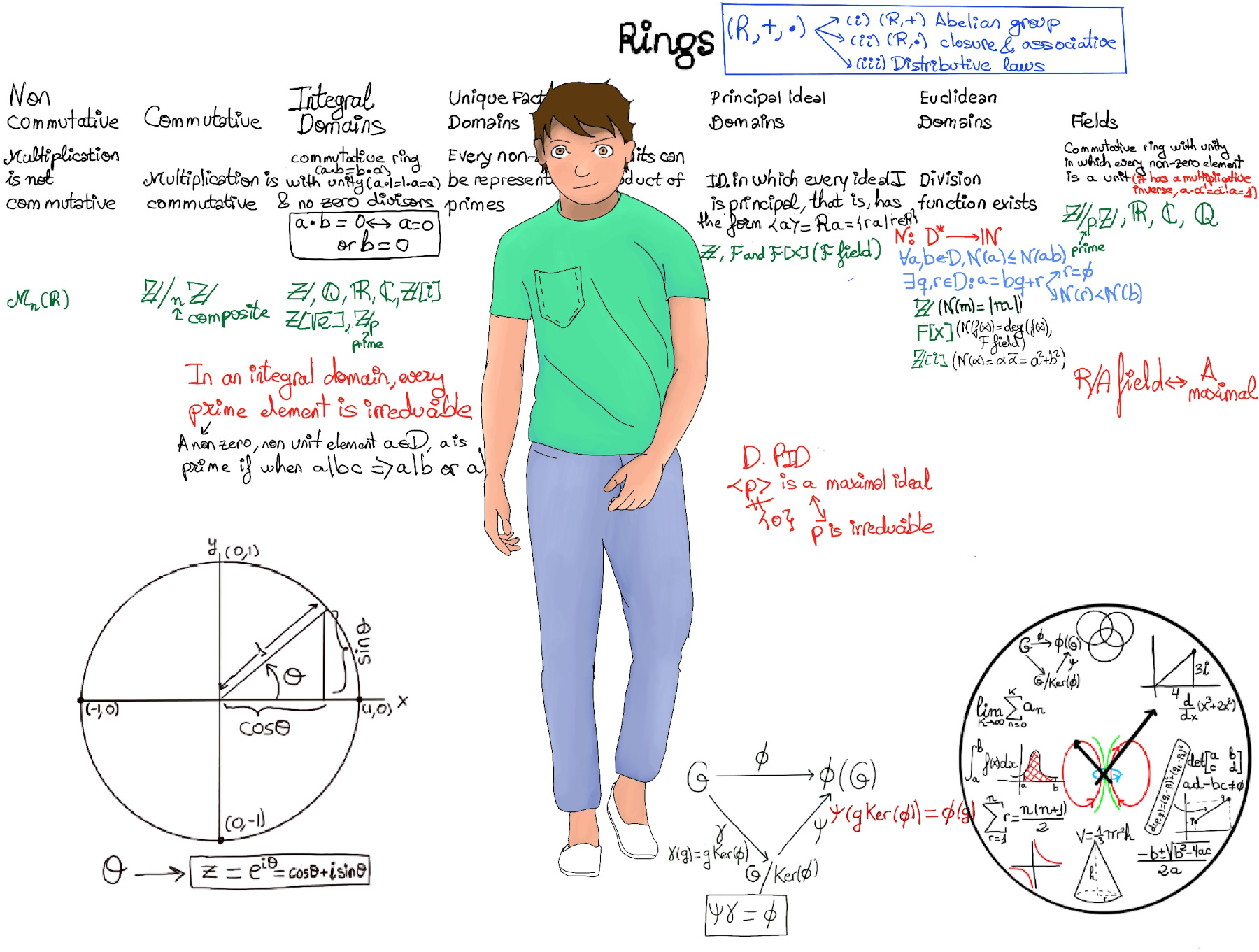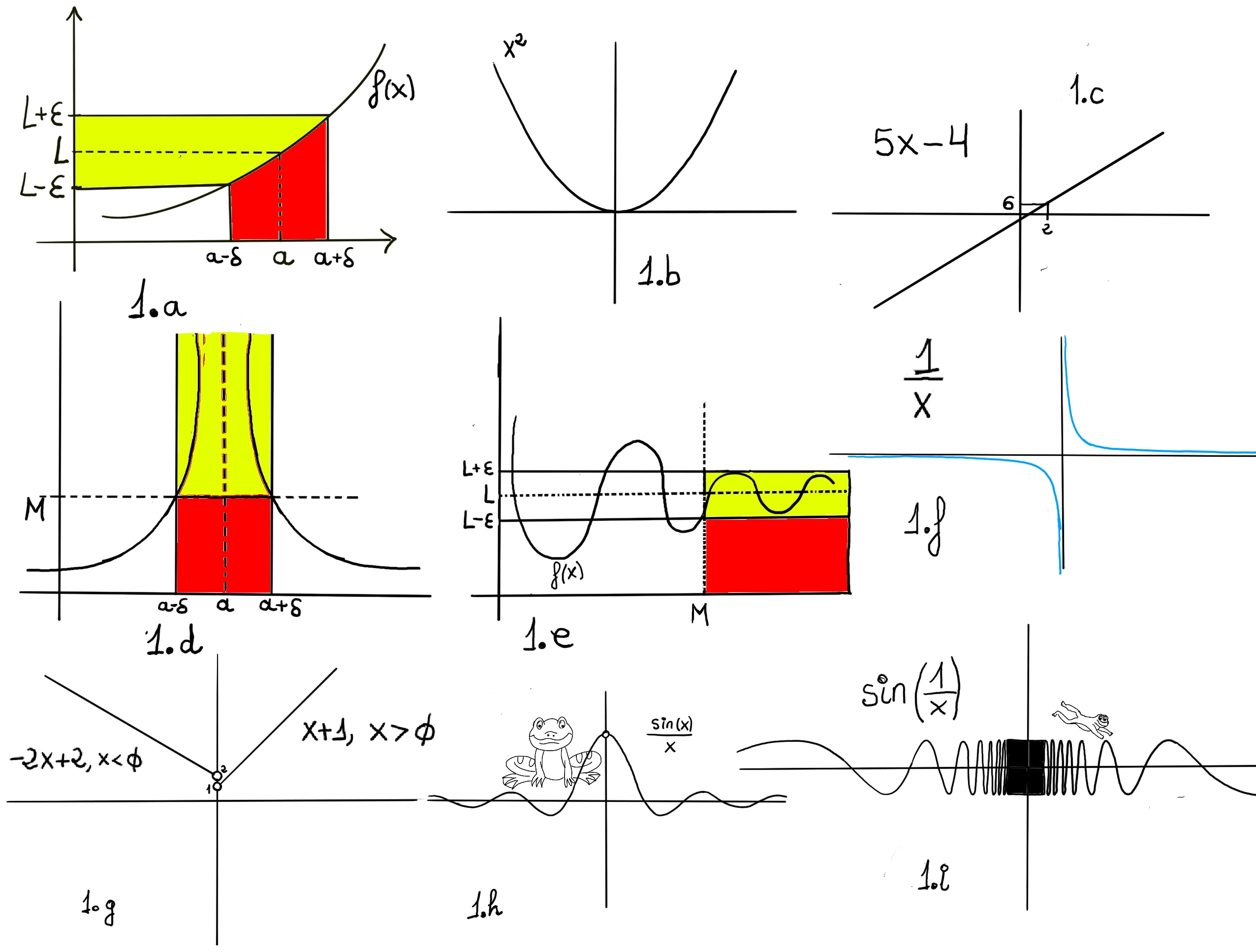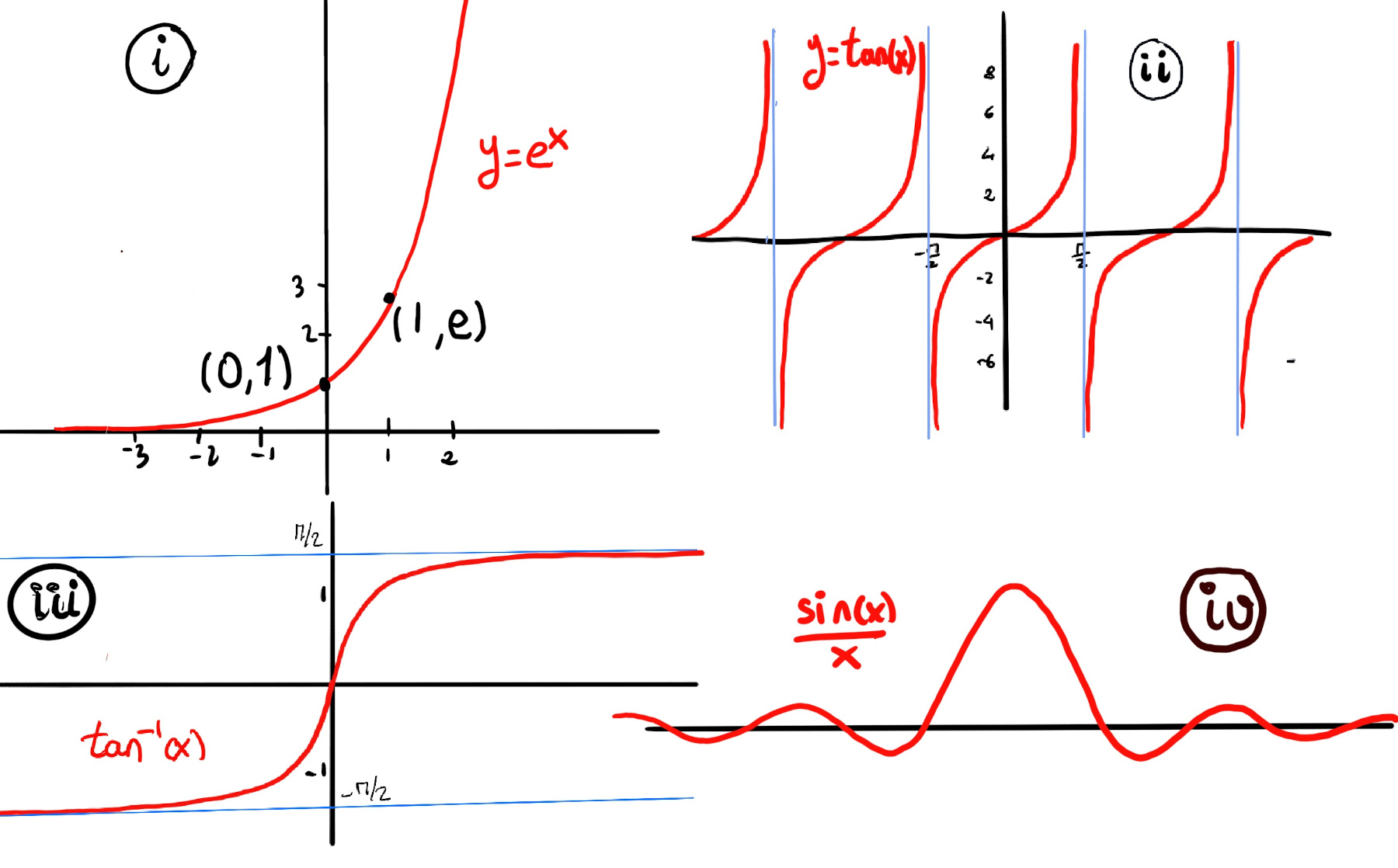
|
 |
 |

|
 |
 |
The best number is 73. Why? 73 is the 21st prime number. Its mirror, 37, is the 12th and its mirror, 21, is the product of multiplying 7 and 3… and in binary 73 is a palindrome, 1001001, which backwards is 1001001, the Big Bang Theory.
Definition. A function f is a rule, relationship, or correspondence that assigns to each element of one set (x ∈ D), called the domain, exactly one element of a second set, called the range (y ∈ E).
The pair (x, y) is denoted as y = f(x). Typically, the sets D and E will be both the set of real numbers, ℝ. A mathematical function is like a black box that takes certain input values and generates corresponding output values (Figure E).

Very loosing speaking, a limit is the value to which a function grows close as the input get closer and closer to some other given value.
One would say that the limit of f, as x approaches a, is L, $\lim_{x \to a} f(x)=L$. Formally, for every real ε > 0, there exists a real δ > 0 such that for all real x, 0 < | x − a | < δ implies that | f(x) − L | < ε. In other words, f(x) gets closer and closer to L, f(x)∈ (L-ε, L+ε), as x moves closer and closer -approaching closer but never touching- to a (x ∈ (a-δ, a+δ), x≠a)) -Fig 1.a.-
 Definition. Let f(x) be a function defined on an interval that contains x = a, except possibly at x = a, then we say that, $\lim_{x \to a} f(x) = L$ if
Definition. Let f(x) be a function defined on an interval that contains x = a, except possibly at x = a, then we say that, $\lim_{x \to a} f(x) = L$ if
$\forall \epsilon>0, \exists \delta>0: 0<|x-a|<\delta, implies~ |f(x)-L|<\epsilon$
Or
$\forall \epsilon>0, \exists \delta>0: |f(x)-L|<\epsilon, whenever~ 0<|x-a|<\delta$

Limits at infinity are used to describe the behavior of functions as the independent variable increases or decreases without bound (basically as stupidity in this crazy world 😄).
Definition. Let f(x) be a function defined on (K, ∞) for some K. Then, we say that, $\lim_{x \to \infty} f(x) = L$, and f(x) is said to have a horizontal asymptote at y = L if
$\forall \epsilon>0, \exists M>0: |f(x)-L|<\epsilon, whenever~ x>M.$ We can make f(x) as close as we want to L by making x large enough, -Figure 1.e.-
Let f(x) be a function defined on (-∞, K) for some K. Then, we say that, $\lim_{x \to -\infty} f(x) = L$, and f(x) is said to have a horizontal asymptote at y = L if
$\forall \epsilon>0, \exists M<0: |f(x)-L|<\epsilon, whenever~ x < M$ We can make f(x) as close as we want to L by making x small enough.

$\forall \epsilon>0, \exists M>0: |\frac{1}{x}|<\epsilon, whenever~ x>M$
Let’s choose $M = \frac{1}{\epsilon}, x>\frac{1}{\epsilon}$ ⇨[x>M, M >0] $|x|>\frac{1}{\epsilon} ⇨ \epsilon>\frac{1}{|x|} ⇒ |\frac{1}{x}| < ε$∎
$\forall \epsilon>0, \exists M>0: |\frac{1}{x-3}-0|<\epsilon, whenever~ x > M$
x > M ⇒ x-3 > M -3 ⇒[Consider x-3 > M -3 >0 because M is as bigger as we want, they are both positive] $|\frac{1}{x-3}| = \frac{1}{x-3}<\frac{1}{M-3}$ =[This is our objective] ε ⇒ M = $\frac{1}{ε} + 3$.
$\forall \epsilon>0, \exists M<0, M = \frac{1}{ε} + 3: |\frac{1}{x-3}|<\epsilon, whenever~ x > M$ because $|\frac{1}{x-3}|<\frac{1}{M-3} = \frac{1}{\frac{1}{ε} + 3-3} = ε$∎
$\forall \epsilon>0, \exists M>0: |\frac{3x}{2x+1} - \frac{3}{2}|<\epsilon, whenever~ x > M$
$|\frac{3x}{2x+1} - \frac{3}{2}| = |\frac{6x-6x-3}{2(2x+1)}|=\frac{3}{2|2x+1|} =$[Here’s the key🔑 idea, x > M > 0, everything is positive] $\frac{3}{2(2x+1)} < \frac{3}{2(2x)} = \frac{3}{4x} < \frac{1}{x} < \frac{1}{M}$ [Let’s choose M= 1/ε] $\frac{1}{\frac{1}{ε}} = ε$ ∎
$\forall N>0, \exists M>0: \sqrt{3x+1}>N, whenever~ x > M$
$\sqrt{3x+1}>$ [x > M > 0 and sqrt is a strictly increasing function] $\sqrt{3x}$ >[$\sqrt{3}>1$] $\sqrt{x}$> [x > M] $\sqrt{M}$ [Choose M = N2] = N ∎
$\forall \epsilon>0, \exists M>0: |\frac{1}{x^2}-0|<\epsilon, whenever~ x > M$
$|\frac{1}{x^2} -0| = \frac{1}{x^2} < \frac{1}{M^2}$ [Let’s choose $\frac{1}{M^2}=ε↭ M = \frac{1}{\sqrt{ε}}$] = ε ∎
$\forall N>0, \exists M>0: \sqrt{x-3}>N, whenever~ x > M$
$\sqrt{x-3} > \sqrt{M-3}$ [Select M such that $\sqrt{M-3}=N ↭ N^2 = M-3↭ M = N^2+3$] = N∎